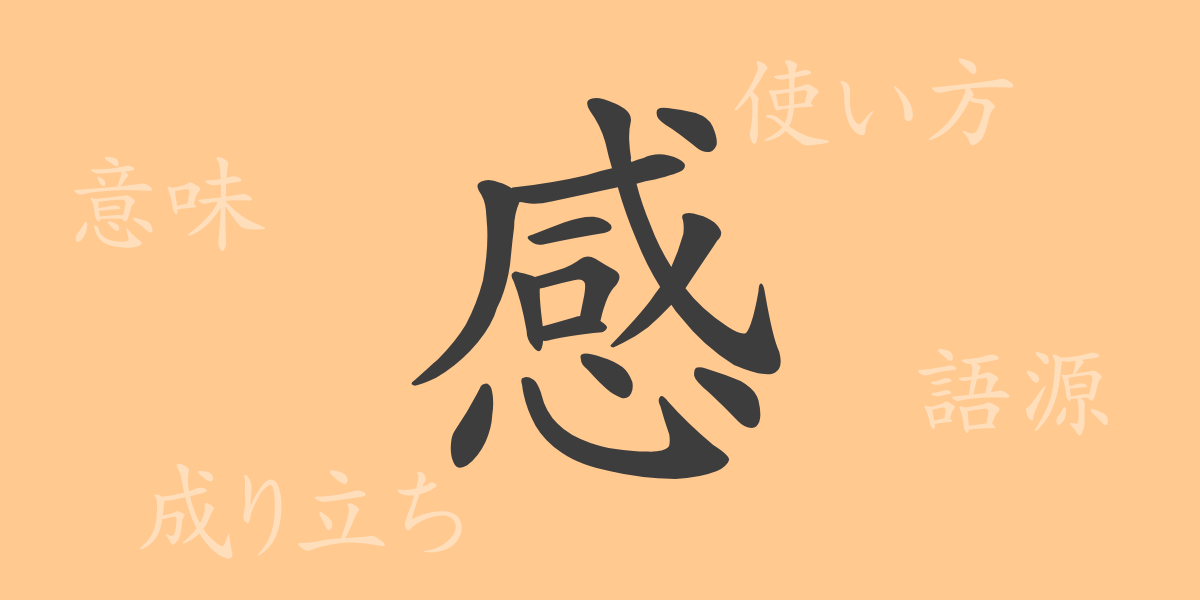The Japanese language is replete with a multitude of kanji characters, each with its unique meaning and history. Among them, the kanji “感” (Kan) is indispensable in expressing emotions and sensations deeply rooted in our daily lives. In this article, we delve into the origins, meanings, usage, readings, stroke count, and radical of “感,” and also introduce idioms, phrases, and proverbs that include it. Let’s explore the world of “感,” one of Japan’s commonly used kanji characters, together.
The Origins (Etymology) of 感
The kanji “感” (Kan) can trace its origins back to ancient Chinese script known as oracle bone script. It originally took the form of “咸” (Kan), signifying the direct influence from the mouth to the heart. Later, by combining “咸” with “心” (heart), the character “感” was formed to express emotions and sensations that deeply appeal to the inner self. Thus, “感” has been used throughout history as a symbol of the impact that external stimuli have on the inner self.
Meaning and Usage of 感
The kanji “感” (Kan) conveys various inner human responses such as “to feel,” “to be moved,” and “to be grateful.” It is also used to represent the stirring of emotions in response to the actions of others or natural phenomena. In terms of usage, “感” appears in words like “感情” (Kanjyou), “感染” (Kansen), and “感覚” (Kankaku), indicating a wide range of phenomena and states.
Readings, Stroke Count, and Radical of 感
How is the kanji “感” read in Japanese, and what is its structure?
- Readings: Onyomi (Sino-Japanese reading) is “Kan”, no Kunyomi (native Japanese reading)
- Stroke Count: A total of 13 strokes
- Radical: Heart (りっしんべん/Rissinben)
Idioms, Phrases, and Proverbs Using 感 and Their Meanings
There are many idioms, phrases, and proverbs in the Japanese language that include the character “感.” Here we explore a few examples and their meanings.
- 感謝(Kansya) – To sincerely thank someone for their kindness or favor.
- 感動 (Kandou)- To be deeply moved emotionally, or such a state of the heart.
- 感染(Kansen) – The transmission of a pathogen to people or animals, causing disease.
- 感覚(Kankaku) – The ability to directly perceive things. Perception obtained through the five senses.
- 感情(Kanjyou) – Emotions such as joy, anger, sorrow, and pleasure.
These idioms and phrases are frequently used in our everyday conversations, literature, and media.
Conclusion on 感
The kanji “感” (Kan) is an extremely important character that represents the movements of the human heart and the influence of the external world. Its meanings and usages are widely employed in everyday life, illustrating the richness of expression in the Japanese language. Through this article, we hope you have gained a deeper understanding of the depth of “感” and that it serves to further your comprehension of the Japanese language.

























